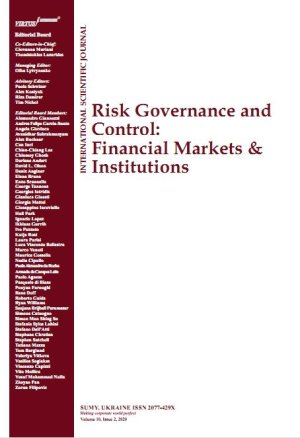
FinTech P2P lending and bank loans in time of COVID-19
Download This Article
Cornelius Rante Langi ![]() , Sugeng Raharjo
, Sugeng Raharjo ![]() , Swadia Gandhi Mahardika
, Swadia Gandhi Mahardika ![]() , Adi Tri Pramono
, Adi Tri Pramono ![]() , Rizky Yudaruddin
, Rizky Yudaruddin ![]() , Yanzil Azizil Yudaruddin
, Yanzil Azizil Yudaruddin ![]()

This work is licensed under a Creative Commons Attribution 4.0 International License.
Abstract
This study investigates the dual impact of peer-to-peer (P2P) FinTech lending and the COVID-19 pandemic on bank lending in Indonesia spanning from 2016 to 2022. Rooted in Christensen’s theory of disruptive innovation, the research underscores how FinTech startups, by leveraging innovative technology, create intense competition for traditional banks (Christensen, 1997). Analyzing data from 121 banks, the findings reveal that the proliferation of P2P lending negatively influences bank loan growth, indicating a potential diversion of borrowers from traditional institutions. Surprisingly, the COVID-19 pandemic exhibits no significant impact on overall bank lending, highlighting the sector’s stability owing to government and financial institution interventions. Notably, when scrutinizing the joint impact of P2P lending and the pandemic, a positive effect on bank lending emerges, particularly benefiting smaller banks. This suggests that P2P lending activities complement traditional bank lending, especially during challenging periods like the pandemic. Smaller banks, in particular, demonstrate adaptability and resilience by strategically leveraging P2P lending, countering disruptions. The study underscores the pivotal role of smaller banks in navigating economic challenges, providing valuable insights for policymakers, regulators, and financial institutions to adapt to the evolving landscape of financial technology and enhance financial access for the public.
Keywords: Financial Technology, Peer-To-Peer Lending, COVID-19, Bank Lending
Authors’ individual contribution: Conceptualization — C.R.L. and R.Y.; Methodology — S.R. and Y.A.Y.; Software — S.G.M. and A.T.P.; Validation — C.R.L. and R.Y.; Formal Analysis — S.R. and Y.A.Y.; Investigation — S.G.M. and A.T.P.; Resources — R.Y.; Data Curation — S.R., R.Y., and Y.A.Y.; Writing — Original Draft — S.R. and Y.A.Y.; Writing — Review & Editing — C.R.L. and R.Y.; Visualization — S.G.M. and A.T.P.; Supervision — S.R. and Y.A.Y.
Declaration of conflicting interests: The Authors declare that there is no conflict of interest.
JEL Classification: E51, G20, G21, H12, O31
Received: 07.11.2023
Accepted: 22.03.2024
Published online: 26.03.2024
How to cite this paper: Langi, C. R., Raharjo, S., Mahardika, S. G., Pramono, A. T., Yudaruddin, R., & Yudaruddin, Y. A. (2024). FinTech P2P lending and bank loans in time of COVID-19. Risk Governance and Control: Financial Markets & Institutions, 14(1), 111–121. https://doi.org/10.22495/rgcv14i1p8



















